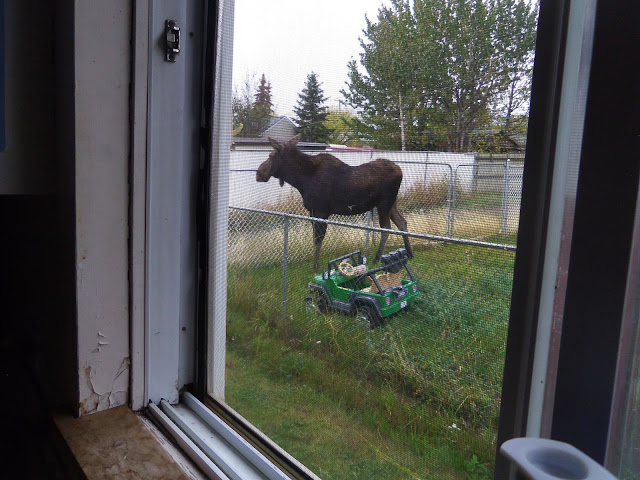If the heat and
periods of strong wind made for a dismal tomato year, it had the opposite
impact on the dry beans I was growing.
In 15+ years, this is the first time the dry beans dried down almost
completely on the plants. No pulling
entire plants in early September and hanging them indoors to avoid heavy rain
or a string of "killer frost" days!
Two of the varieties grown this year – Early Warwick and Wiener Treib - proved to be very early to
dry. I only grew out a small amount of them and
wish I’d planted more. Overall, the
varieties of dry beans I’ve found to be the earliest (listed as best I can from
the very earliest on down) are:
Wiener Treib (dry/bush) - 2022
Early Warwick (dry/bush) - 2022
Beka Brown (dry/bush)
Ireland Creek Annie
(dry/bush) - 2022
Swedish Brown (dry
bush w/short runners)
Mitla Black (dry bush
w/short runners)
Small White Navy (dry
bush w/short runners)
Purple Amish Gnuttle
(dry bush w/short runners)
Honorable Mentions for
early dry bush beans: Ruckle (2022), Cattle
(2022 - also called, “Jacob’s Cattle”) and Painted Pony.
Incidentally, if your beans have begun to dry down and rain is in the forecast, for Heaven's sake, get
them inside right away. I will never forget the
year I had a beautiful bed of healthy, productive Painted Pony plants, drying
down nicely, when the weather suddenly turned cool and wet. The temperatures bounced back the following
day, the sun beamed…and all the beans sprouted inside the pods. Arhg!
Of the few dry pole
beans I have grown, Flagg (also called, “Skunk” and “Chester”) and Dolloff have
been the earliest to dry. That being
said, many of the pods had to complete drying down indoors after being picked
in late August/early September.
Dry beans grown in 2022
(Click to enlarge photos)
Wiener Treib
A small white and speckled gold heirloom with Dutch origins. Rare. Very early for a dry bean. Rich flavour, meaty texture, nice for stews, chilis, and soups. Easy to pick and shell. Seeds obtained from a member of Seeds of Diversity, through the Member Seed Directory.
Early Warwick
A dark red speckled bean from Warwick England, grown pre-1890. I find them quite pretty! Very tasty in chilis and baked beans, and they hold their shape when cooked. Productive, early, and cool weather tolerant. Seeds obtained from a member of Seeds of Diversity, through the Member Seed Directory.
Ireland Creek Annie
Productive, reliable, and early (~80DTM). A nice soup bean that makes it's own sauce/broth. According to Annapolis Seeds, where I originally purchased these beans, it was named after Ireland Creek Farm in the Fraser Valley (BC, Canada) where it has been grown since the 1930s.
Mrociumere
An heirloom bean from the Kenyan region of Africa. They have a thin skin and creamy texture. Narrow kidney shape and a finely speckled lavender colour. About 90DTM for dry beans. I have read they are best for creamy soups and dips. Seeds were obtained in a trade and grown out.
Ruckle
An heirloom named by Gwen Ruckle of Salt Spring Island. A white kidney bean that matures early on productive plants. Mild, sweet flavour. Originally purchased through Salt Spring Seeds.
Tiger Eye (dry bush w/short runners)
A beautiful, large gold/orange bean with burgundy stripes. Not the most productive bean I have grown, but I've grown it often because it looks and tastes so nice. When planted in a plot with short stakes between the rows, the runners have something to cling to and the pods dry down more quickly and evenly. I bought these years ago and am unsure now where. Possibly The Cottage Gardener. (I still miss their lovely catalog, and trust they are enjoying their semi-retirement! :)
Tene’s Beans
White, egg-shaped, an heirloom marrowfat type bean. It has it's roots in Grand Manan, New Brunswick, where it was grown by the Locke family for generations. Great for traditional baked beans, or cooked and eaten just as they are. Approximately 90DTM. I originally bought these seeds from Heritage Harvest Seed.
Coco Jaune de Chine
According to Heritage Harvest Seed (where I originally purchased this bean), this is a very rare original strain of the China Yellow or Sulphur bean. It cooks down to a thick sauce, making it great for soups and stews. Though a small bean, I find it fairly late to dry down (~100-110 DTM), so don't grow it as often as I would like.
Cattle beans
A productive and reliable heirloom from New England that strikes me as surprisingly early for it's size. Plump, oblong seeds that are white with maroon speckles and splotches. Good for baked bean dishes and soups. The plants grow close to 2' tall. ~90DTM. Obtained in a trade.
And...Gold Harvest dry pea!
An heirloom from Salt Spring Seeds. The plants are compact (2-3 feet tall), productive, and early to dry down. The pods are small and contain just a few peas each. The flowers are lovely - pink and coral in colour. Though I haven't tried them yet, they apparently have a distinct chestnut flavour.

.JPG)










.JPG)


























